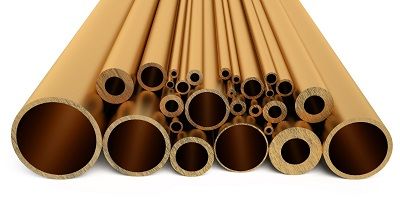There is no denying the versatility and strength of brass tube. The debate on these tubes isn’t whether they should be used; it is which shape is better suited for the job. Tubes made of brass come in all shapes and sizes. Common shapes range from the typical round and square, while other suppliers can make custom-made shapes upon a client’s request. All of this is because brass tubes have a lot of applications both in practicality and design.
When it comes to the round and square tubes, many still debate on which one is better. Here is a quick comparison of both shapes:
The Round Tube
The brass round tube is most commonly used for practical and architectural needs. They are designed for transporting fluid across one space to another in a quick and timely manner. Round tubes are very strong and rigid and the strength of the tube is evenly distributed in every direction. For those reasons, they have more structural integrity compared to their square counterparts.
Since the distribution of strength and metal is fairly even in round tubes, control during distortion and bending is easy to manage. This makes round tubes cutting more accurate when resizing the tubes for various uses. Round tubes are also easier to weld together because of their shape. Finally, add to the fact that round tubes are 20% lighter than square tubes, which makes them easier to transport for large construction projects. The result of all these advantages makes round tubes the better candidate for practicality.
The Square Tube
Upon first glance it seems like there is no use for brass square tubes in the market since round tubes already have a long list of advantages. Before discounting square tubes, take note of its advantages first. Square tubes are most commonly used for interior decorating purposes. They are used in fixtures and furniture to add color, stability, and enhanced durability.
A square tube is also very durable, but it does have its weak spots. It cannot hold as much weight as the round tube, nor is it capable of transporting liquid quickly, but it is very easy to cut. The best use for square metal tubes is for sharp corners where round tubes cannot fit. Projects like those dealing with beams and other complex angles are when square tubes are most useful.
Always Ask a Professional for Advice
Brass tubing is very handy, regardless of shape. However, using the tubes without doing more research on their specific uses and advantages can lead to trouble. If you are unsure of which tube shape is better for your project, ask a metal supplier or an experienced contractor for their opinions. It is better to be safe than sorry.
About Rotax Metals: Aside from the usual shapes and sizes there are also other brass tubing shapes available if you know where to look. Rotax Metals is the leading supplier of metals for all industries ranging from construction to jewelry making. Any kind of tube shape you want, they can provide. It is also a guarantee that all Rotax Metals products are high-quality and made using eco-friendly practices. With the help of Rotax Metals you can build and create anything out of metal.
Sources:
Round and Square Tube Bending: Tension and Compression, CMRP.com
Metal Tubes Information, GlobalSpec.com



